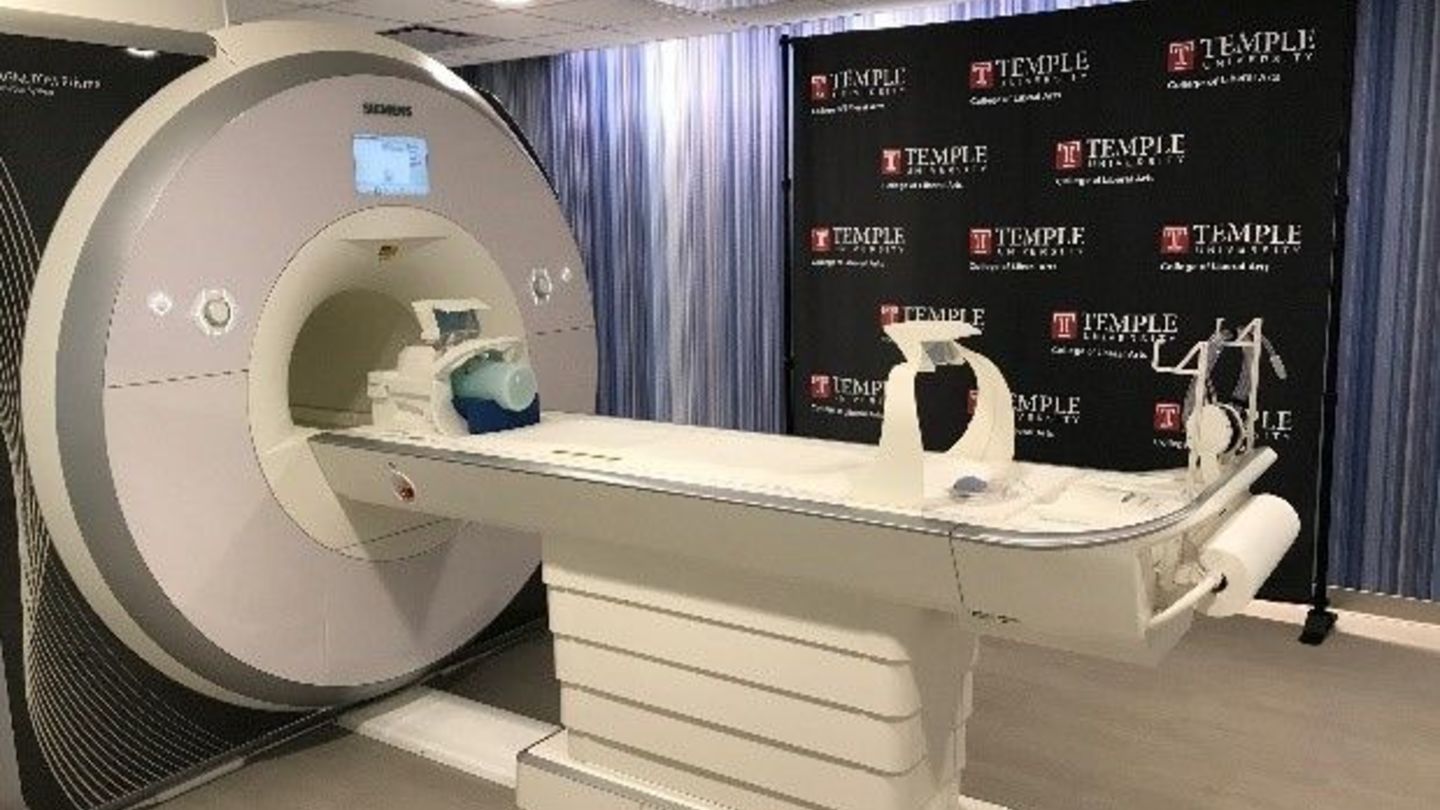
By: Jason Chein, Ph.D.
Faculty in the Temple University Psychology Department now have a cutting-edge tool for peering into the active human brain, thanks to a major grant award of $2.4 Million from the National Science Foundation and substantial support from the university, the Office of the Vice President for Research, and the College of Liberal Arts. Through this support, we have created a brand new advanced brain imaging facility—the Temple University Brain Research & Imaging Center (TUBRIC)—right here in Weiss Hall.
As its centerpiece, TUBRIC houses a state-of-the-art magnetic resonance imaging scanner, a 3-Tesla Siemens PRISMA magnet. This advanced scanner supports a diverse range of non-invasive research applications. It can produce exquisite images of the basic structure of the human brain (via MRI), delineate the complex cabling pathways that connect up the brain's networks (diffusion imaging), show the distribution of specific biochemicals in the brain (spectroscopy) and provide a window into the moment-to-moment changes in brain activity that arise through specific mental processes (fMRI).
Our already vibrant neuroimaging community has plans to apply these capabilities to pioneering research on a wide array of foundational and translational topics surrounding human mental functioning and its breakdown. Specific areas of investigation will focus on how people think, remember, make decisions, and pay attention; how we process language, space, and action; and how these capabilities develop.
The center itself offers a testing environment designed to be accommodating to the diverse and special research populations with whom we conduct our studies, and make the experience of participating in an MRI experiment enjoyable. It offers immediately adjacent participant preparation, testing, and interview space, furnished with a range of integrated and supplemental research instruments to complement our basic imaging work.
The center and its core instruments will also be used to enrich undergraduate and graduate educational opportunities in the department, by providing an environment suited to hands-on training in neuroimaging methods, and designed to enable directed student research projects. Accordingly, TUBRIC will not only accelerate and enhance the many lines of research currently being conducted by our investigators, but will empower the pursuit of exciting new research directions, and foster the training of students who wish to gain familiarity with this important research technology.
